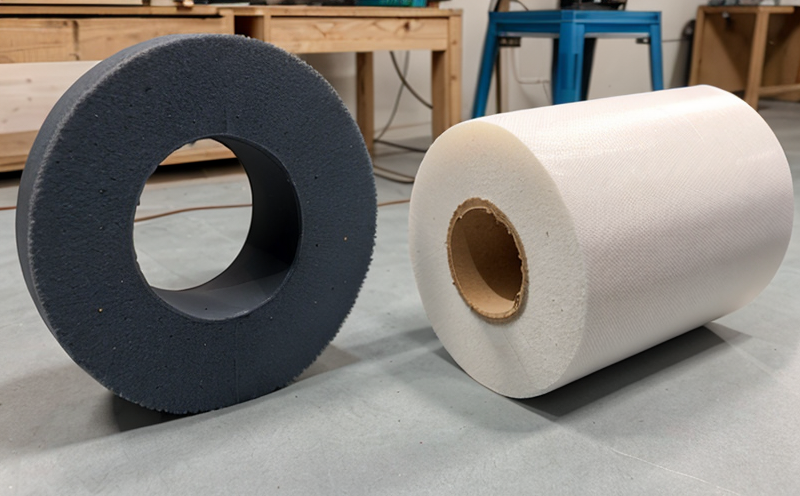ISO 2039 Hardness Testing of Plastic Furniture Materials
The ISO 2039 hardness test is a critical procedure used to measure the resistance of plastic materials under indentation. This method is widely recognized for its precision and reliability, making it an essential tool in quality control processes within the furniture industry.
In this context, testing plastic furniture materials ensures that products meet specific standards of durability, safety, and performance. The test is particularly valuable when evaluating the suitability of raw materials before they are used in manufacturing or for quality assurance purposes post-production. Compliance with ISO 2039 helps manufacturers ensure consistent product quality across different production batches.
The test method involves applying a standard indenter to the surface of the sample material and measuring the depth of indentation caused by the indenter under specified loads. The resulting hardness value is then compared against industry standards or specifications provided by the furniture manufacturer. This process ensures that materials used in furniture construction are capable of withstanding the stresses they will encounter during use.
For instance, a higher hardness score indicates greater resistance to indentation and potential damage from everyday wear and tear. Conversely, lower scores suggest more susceptibility to dents or deformations, which could compromise both aesthetic appeal and functional integrity of the furniture piece. By incorporating ISO 2039 into their quality assurance protocols, manufacturers can enhance product reliability while also mitigating risks associated with non-compliant materials.
Another key aspect of this testing procedure is its role in promoting sustainability within the furniture sector. By ensuring that only high-quality plastic materials are used, companies reduce waste generation and promote resource efficiency throughout the supply chain. Moreover, adherence to international standards like ISO 2039 fosters trust among consumers who value eco-friendly practices.
| Application | Description |
|---|---|
| Furniture Design and Development | Evaluating the suitability of new plastic materials for use in furniture design. |
| Quality Control | Ensuring consistent material quality across production batches. |
| Sustainability Initiatives | Reducing waste generation and promoting resource efficiency in manufacturing processes. |
Industry Applications
- Evaluating the suitability of new plastic materials for use in furniture design.
- Ensuring consistent material quality across production batches.
- Reducing waste generation and promoting resource efficiency in manufacturing processes.
| Application | Description |
|---|---|
| Furniture Design and Development | Evaluating the suitability of new plastic materials for use in furniture design. |
| Quality Control | Ensuring consistent material quality across production batches. |
| Sustainability Initiatives | Reducing waste generation and promoting resource efficiency in manufacturing processes. |
Customer Impact and Satisfaction
The implementation of ISO 2039 hardness testing significantly enhances customer satisfaction by delivering furniture products that are durable, safe, and visually appealing. When manufacturers adhere to this international standard, they provide consumers with confidence knowing that their purchases meet stringent quality standards.
Consistent application of the test ensures that all pieces manufactured using a particular type of plastic material possess similar hardness properties, thus maintaining uniformity in product performance. This consistency contributes positively towards building brand reputation and fostering long-term customer loyalty.
In addition to improving overall customer satisfaction levels, adherence to ISO 2039 also helps businesses differentiate themselves from competitors by demonstrating commitment to excellence. Consumers increasingly expect companies to prioritize environmental responsibility; therefore, implementing sustainable practices such as rigorous quality assurance measures can set a business apart in today’s competitive market.
Furthermore, meeting the requirements set forth by this standard provides peace of mind for customers regarding potential hazards associated with substandard products. Knowing that their furniture has been rigorously tested according to international norms reassures them about its safety and longevity.
Competitive Advantage and Market Impact
The adoption of ISO 2039 hardness testing offers numerous benefits beyond mere compliance with industry standards. It serves as a strategic advantage that enhances market position by ensuring superior product quality, reliability, and safety.
By incorporating this rigorous testing protocol into their operations, furniture manufacturers can better compete in global markets where regulatory compliance is increasingly important. Meeting international standards such as ISO 2039 demonstrates commitment to excellence, which is crucial for gaining market share and maintaining competitive edge.
Moreover, adhering to these stringent quality assurance measures helps businesses differentiate themselves from competitors who may not prioritize similar levels of scrutiny during production processes. This differentiation can translate into higher customer loyalty and increased sales volume as consumers gravitate towards brands they trust implicitly.
The emphasis on sustainability through rigorous testing also aligns with growing consumer awareness regarding environmental impact. As more people become environmentally conscious, businesses that demonstrate proactive approaches to reducing waste generation and promoting resource efficiency are likely to attract greater interest from eco-conscious customers.





